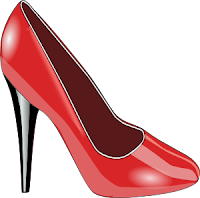One Family's Return Trip: Goodbye Bogotá, Hello Valle
 Belalcazar was one of the original Conquistadores of Colombia. Born Sebastián Moyano in about 1480. He was left an orphan and raised by his brother. He later chose to take as his last name the name of the city near where he had grown up.
Belalcazar was one of the original Conquistadores of Colombia. Born Sebastián Moyano in about 1480. He was left an orphan and raised by his brother. He later chose to take as his last name the name of the city near where he had grown up.How he arrived in the Americas is disputed. Some say he came with Colombus on his third trip in 1498. Others believe he came with Pedrarias Dávila, and then went on to explore the Darién with Vasco Balboa. Whatever you wish to believe about his arrival, the record does show that he eventually ended up with Francisco Fernández de Córdoba in Nicaragua. He did such a great job with Francisco, that he was named the mayor of León, a newly founded city.
 Eventually he returned to Panamá, where he joined up with Francisco Pizarro and Diego de Almagro who were leaving to conquer Perú. He participated with them in the conquering of the Incan empire.
Eventually he returned to Panamá, where he joined up with Francisco Pizarro and Diego de Almagro who were leaving to conquer Perú. He participated with them in the conquering of the Incan empire.Then, Belalcazar organized his own expedition that took him North into Ecuador. It was there, in Latacunga, that heard an amazing tale from an Ecuadorian Indian. The Indian told Belalcazar that there was a race of people who made exquisite works of gold, and whose religious rites included the painting of the chief in gold. Then the king and many works of gold would be thrown into a lake. (This is the actual legend of El Dorado, and is based not in fiction, but in the real practice of the Muisca Indians of the Altiplano Cundiboyacense at the Lago Guatavita).
Upon returning to Péru, he informed Pizarro of his plan. Pizarro was jealous and angry, but eventually Belalcazar set out to find El Dorado in 1533. In 1534, he founded San Francisco de Quito -- the actual capital of Ecuador today. In 1536, he continued his advance Northward passing through what is today Pasto and Popayán.
Wishing to establish a stable center in el Valle, he established Santiago de Cali on the 25th of July 1536 and turned over the leadership of the village to Miguel López Muñoz. He then returned to Popayán and established a village there in December 1536.
With the newly formed villages well under control, he again began he march North in search of El Dorado. Eventually, he formed part of the most interesting coincidences in history. In 1539, he arrived in what is today Bogotá within hours of two other Conquistadores -- Gonzálo Jiménez de Quesada (coming from Santa Marta) and Nicolas de Federman (coming from Venezuela). They couldn't of planned it and had it turn out that way. [Let me just say that if your Spanish is good, you should read "Caminando en el Tiempo" available here http://www.amazon.com/Caminando-En-El-Tiempo-Spanish/dp/9582813946 It is a super book!]
The three conquistadores were unable to come to an agreement about who should be in charge of the area. So, the three decided to race back to Spain to plead their case to Charles V. In the end, Belalcazar was named the "adelantado" of Popayán and Jiménez the "adelantado" of Nueva Granada.
Later, in a land dispute with Miguel Robledo over Antioquia, Belalcazar ordered that Robledo be put to death. The sentence was carried out in 1546. As a result the Robledo family and Belalcazar's enemies joined forced and in 1550 he was arrested and sentenced to death. He appealed the decision and was allowed to leave to take his case to the court in Cartagena de Indias. However, en route to Cartagena he became ill and he died in Cartagena shortly after his arrival on April 30, 1551.
http://www.banrepcultural.org/blaavirtual/biografias/belaseba.htm
Photo Drawing of Belalcazar:
http://en.wikipedia.org/wiki/File:Sebastian_de_Belalcazar.jpg

Comments